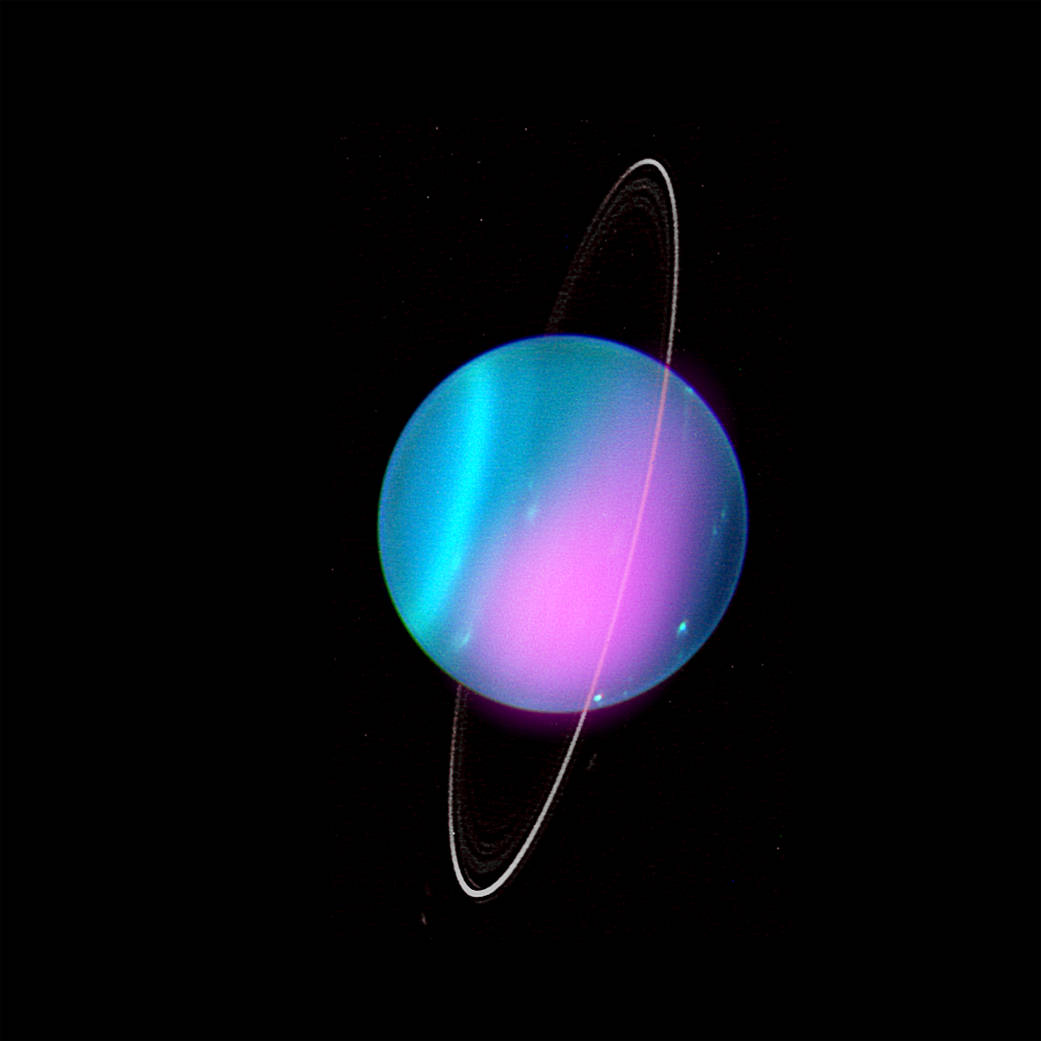Astronomers have detected X-rays from Uranus for the first time, using NASA’s Chandra X-ray Observatory, as shown in this image from March 2021. This result may help scientists learn more about this enigmatic ice giant planet in our solar system.
Uranus is the seventh planet from the Sun and has two sets of rings around its equator. The planet, which has four times the diameter of Earth, rotates on its side, making it different from all other planets in the solar system. Since Voyager 2 was the only spacecraft to ever fly by Uranus, astronomers currently rely on telescopes much closer to Earth, like Chandra and the Hubble Space Telescope, to learn about this distant and cold planet that is made up almost entirely of hydrogen and helium.
In the new study, researchers used Chandra observations taken in Uranus in 2002 and then again in 2017. They saw a clear detection of X-rays from the first observation, just analyzed recently, and a possible flare of X-rays in those obtained fifteen years later.
Image Credit: X-ray: NASA/CXO/University College London/W. Dunn et al; Optical: W.M. Keck Observatory
天文学家利用NASA的钱德拉X射线天文台首次探测到来自天王星的X射线,如图所示,这是2021年3月拍摄的图像。这一结果可能有助于科学家更多地了解太阳系中这颗神秘的巨型冰行星。
天王星是距离太阳的第七颗行星,在其赤道上有两组星环。这颗行星的直径是地球的四倍,它是侧向自转,这使它不同于太阳系中所有其他行星。由于旅行者2号是唯一一个飞过天王星的航天器,天文学家目前依靠离地球更近的望远镜,如钱德拉和哈勃太空望远镜,来了解这个几乎完全由氢气和氦气组成的遥远而寒冷的星球。
在这项新研究中,研究人员使用了2002年和2017年钱德拉天文台对天王星的观测结果。他们从最近刚刚分析的第一次观测中清楚地发现了X射线,并在15年后获得了可能的X射线耀斑。
图片来源:X-ray: NASA/CXO/University College London/W. Dunn et al; Optical: W.M. Keck Observatory







